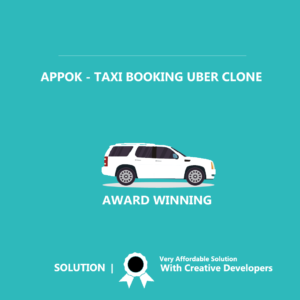Introduction
In today’s fast-paced world, people are always looking for ways to simplify their daily routine tasks, such as grocery shopping. This is where grocery apps come into play. Grocery apps have revolutionized the way people shop for groceries, making it easier and more convenient than ever before. In this article, we will explore everything you need to know about grocery app development, including its benefits, features, development process, and more.
Table of Contents
- Introduction
- Benefits of Grocery App Development
- Key Features of a Grocery App
- Types of Grocery Apps
- Monetization Strategies for Grocery Apps
- How to Develop a Grocery App
- Pre-development Phase
- Market Research
- Identifying Target Audience
- Competitor Analysis
- Defining Goals and Objectives
- Development Phase
- Choosing the Right Platform
- Designing User Interface and User Experience
- Integration of Features and Functionalities
- Testing and Launch
- Alpha and Beta Testing
- Launching the App
- Post-development Phase
- Marketing and Promotion
- Analytics and Performance Tracking
- Challenges Faced in Grocery App Development
- Future of Grocery App Development
- Conclusion
- FAQs
Benefits of Grocery App Development
There are several benefits of grocery app development, both for businesses and consumers. Let’s take a look at some of the key benefits below:
Convenience
Grocery apps offer the convenience of shopping for groceries from the comfort of your own home. Users can browse through a wide range of products and make purchases at their convenience.
Time-Saving
Grocery apps save users a lot of time by eliminating the need to physically visit a grocery store. Users can complete their grocery shopping in a matter of minutes, with just a few clicks on their mobile device.
Cost-Effective
Grocery apps offer users access to a wide range of products at competitive prices. Additionally, users can take advantage of various offers and discounts available on the app.
Improved Customer Engagement
Grocery apps provide businesses with a direct channel to engage with their customers. By offering personalized recommendations and promotional offers, businesses can improve customer engagement and loyalty.
Key Features of a Grocery App
A successful grocery app should have the following key features:
User-Friendly Interface
The app should have a user-friendly interface that is easy to navigate and understand. Users should be able to easily find the products they are looking for and make purchases quickly.
Search and Filter
The app should have a search and filter feature that allows users to find products based on their preferences, such as price, brand, and category.
Shopping List
The app should have a shopping list feature that allows users to create a list of items they want to purchase in the future.
Multiple Payment Options
The app should offer multiple payment options, including debit/credit cards, net banking, and mobile wallets.
Push Notifications
The app should send push notifications to users regarding offers, discounts, and promotions.
Types of Grocery Apps
There are several types of grocery apps available in the market today. Some of the most popular types include:
On-Demand Grocery Apps
These apps allow users to order groceries online and have them delivered to their doorstep in a matter of hours.
Grocery Delivery Apps
These apps offer a similar service to on-demand grocery apps, but with a focus on delivering groceries to users on a regular basis.
Grocery Store Apps
These apps are developed by grocery stores themselves and offer users access to a wide range of products
Monetization Strategies for Grocery Apps
There are several monetization strategies that businesses can use for their grocery apps:
Commission-Based Model
Under this model, businesses charge a commission on every order placed through the app.
Subscription-Based Model
Under this model, users are charged a monthly or yearly subscription fee to access the app’s services.
Advertising Model
Under this model, businesses can earn revenue by displaying ads within the app.
How to Develop a Grocery App
Developing a grocery app requires a strategic approach, consisting of three main phases: pre-development, development, and post-development.
Pre-development Phase
Market Research
The first step in developing a grocery app is to conduct market research. This involves analyzing the target market, understanding consumer behavior and preferences, and identifying potential competitors.
Identifying Target Audience
Based on the research, businesses can identify their target audience and design the app to cater to their specific needs and preferences.
Competitor Analysis
Competitor analysis involves identifying the strengths and weaknesses of existing grocery apps and determining how to differentiate the new app from the competition.
Defining Goals and Objectives
Defining clear goals and objectives is crucial to the success of a grocery app. This involves outlining the purpose of the app, identifying key performance indicators, and setting realistic targets.
Development Phase
Choosing the Right Platform
Choosing the right platform for the app is crucial. Businesses can choose between native apps, web apps, or hybrid apps, based on their specific requirements and target audience.
Designing User Interface and User Experience
The user interface and user experience (UI/UX) are critical components of any successful grocery app. The app should be designed to provide a seamless and engaging experience for the users.
Integration of Features and Functionalities
Integrating the right set of features and functionalities is crucial to the success of the app. This includes features such as search and filter, shopping list, multiple payment options, push notifications, and more.
Testing and Launch
Alpha and Beta Testing
Before launching the app, businesses should conduct alpha and beta testing to identify and fix any bugs or issues.
Launching the App
Once the testing phase is complete, the app can be launched on the app stores.
Post-development Phase
Marketing and Promotion
Marketing and promotion are crucial to the success of any app. Businesses can use a variety of channels, such as social media, email marketing, and paid advertising, to promote their app and attract users.
Analytics and Performance Tracking
Analyzing the app’s performance and tracking key metrics is essential to improving the app’s overall user experience and making data-driven decisions.
Challenges Faced in Grocery App Development
Developing a successful grocery app comes with its fair share of challenges. Some of the most common challenges include:
Data Security
Ensuring the security of user data is critical to the success of the app. Businesses must implement robust security measures to protect user data from cyber threats.
User Adoption
Getting users to adopt the app can be a challenge, especially in a crowded market. Businesses must invest in marketing and promotion to attract users to their app.
6. How do grocery apps ensure the quality of the products?
Grocery apps partner with reputable vendors and suppliers to ensure the quality of the products. They also have a quality control team that checks the products before they are delivered to the customers.
7. Can I customize my orders on the grocery app?
Yes, most grocery apps allow customers to customize their orders by adding or removing items and choosing specific delivery times.
8. How do grocery apps handle payments?
Grocery apps usually handle payments through secure payment gateways that accept various payment methods, such as credit/debit cards, net banking, and digital wallets.
9. Can I schedule recurring orders on the grocery app?
Yes, most grocery apps have a feature that allows customers to schedule recurring orders, such as weekly or monthly orders, for their convenience.
10. What are some unique features that grocery apps can offer?
Grocery apps can offer unique features such as personalized recommendations, recipe suggestions, in-app messaging with customer support, and loyalty programs that reward customers for their purchases. These features can help businesses differentiate themselves from the competition and retain customers.
In conclusion, grocery app development has transformed the grocery shopping experience, making it more convenient and efficient for customers. Businesses can benefit from grocery app development by providing personalized services, reliable delivery, and unique features. As the market continues to grow, businesses need to stay ahead of the competition by constantly updating their apps and providing exceptional services.




